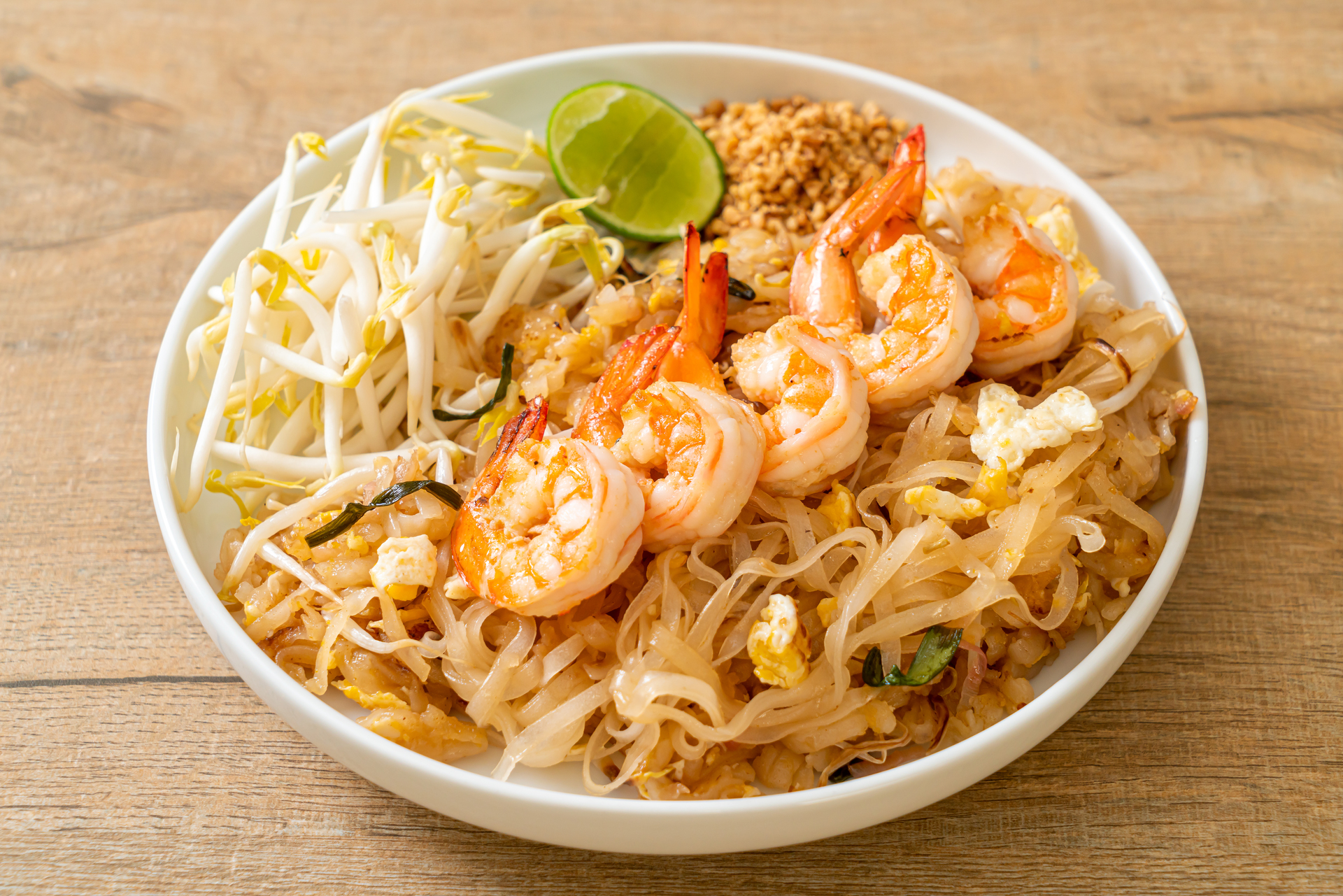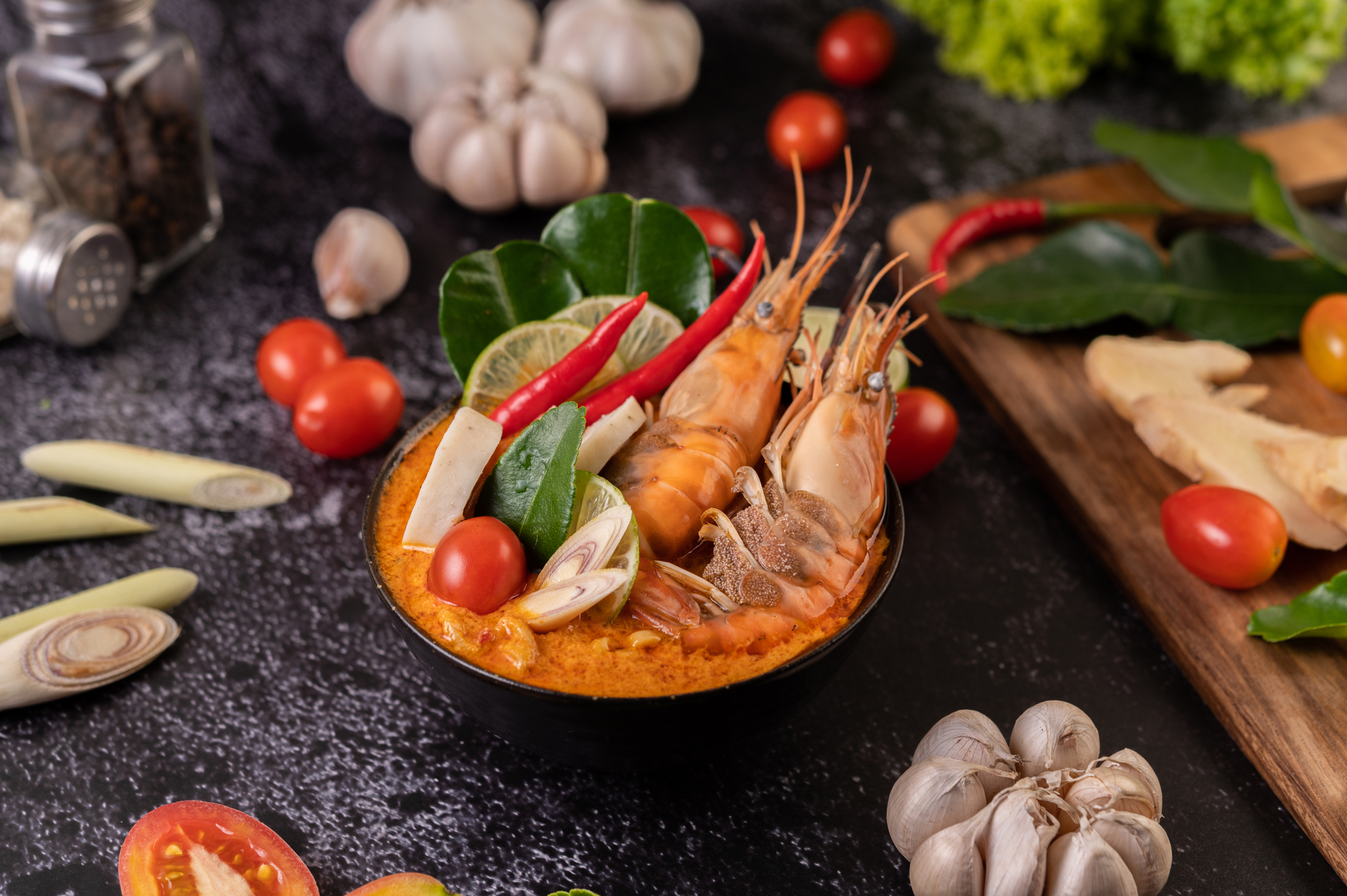
What to Eat in Thailand: A Guide to Thai Cuisine
When it comes to global food destinations, Thailand is at the top of the list. From bustling street markets to fine dining restaurants, Thai cuisine offers an unforgettable mix of flavors, aromas, and textures. But with such a wide array of dishes, knowing what to eat in Thailand can feel overwhelming. Whether you're a fan of spicy curries, tangy salads, or noodle-based dishes, Thai food offers something for every palate.
In this guide, we’ll explore:
- Introduction to Thai Cuisine
- What to Eat in Thailand: Must-Try Thai Dishes
- Regional Specialties
- Unique Food and Drink Experiences
- Enhancing Your Thai Experience with AIP
Introduction to Thai Cuisine
Thai cuisine is renowned for its bold and diverse flavors, which are built on the perfect balance of sweet, sour, salty, and spicy. The use of fresh herbs and spices—such as lemongrass, galangal, and kaffir lime leaves - creates a vibrant culinary experience that reflects the rich culture and history of Thailand.
If you're wondering what to eat in Thailand, understanding the unique flavors of Thai cuisine is the perfect place to start.
Unique Flavors of Thai Cuisine
At the heart of Thai cooking is the balance of flavors. You'll notice how most dishes feature a combination of elements that are carefully designed to excite your taste buds. For example, even a simple dish like Tom Yum Goong manages to be sour, spicy, salty, and a little sweet all at once.
Thai food is also known for its use of fresh ingredients, including a variety of vegetables, meats, and seafood. The combination of these elements creates dishes that are both healthy and satisfying.
Importance of Food in Thai Culture
Food is more than just sustenance in Thailand—it's a central part of social interactions and daily life. Meals are typically shared, with multiple dishes placed in the center of the table for everyone to enjoy. Whether you're dining in a high-end restaurant or grabbing a quick meal from a street vendor, the sense of community around food is deeply ingrained in Thai culture.
In Thai society, eating together is a way to strengthen relationships and enjoy the pleasure of good company. This communal approach to dining is something you'll experience firsthand as you explore what to eat in Thailand.
What to Eat in Thailand: Must-Try Thai Dishes
If you’re deciding what to eat in Thailand, here are some quintessential Thai dishes that no visit would be complete without. From street food to restaurant favorites, these are among the best Thai dishes to try.

Pad Thai
Perhaps the most famous of all Thai dishes, Pad Thai is a stir-fried noodle dish that combines rice noodles, eggs, tofu or shrimp, bean sprouts, and peanuts. It's typically served with a wedge of lime and chili flakes on the side, allowing you to adjust the flavors to your liking. This iconic dish is a must-try and ranks among the best Thai dishes.
Why You Should Try It: Pad Thai offers a harmonious blend of sweet, sour, and savory flavors, making it appealing to a wide range of palates. It's a perfect introduction to Thai cuisine.

Tom Yum Goong (Spicy Shrimp Soup)
Tom Yum Goong is a hot and sour soup that's flavored with lemongrass, galangal, kaffir lime leaves, and fiery chilies. The shrimp add a delicate sweetness, balancing out the spicy and sour notes. It's a refreshing dish that packs a punch of flavor, making it one of the best Thai dishes to try.
Why You Should Try It: This soup is a quintessential Thai dish that embodies the complexity and depth of Thai flavors.

Som Tum (Green Papaya Salad)
This refreshing salad is made from shredded unripe papaya, tomatoes, peanuts, and green beans, all tossed in a dressing of lime juice, fish sauce, and chilies. It's a perfect mix of spicy, sour, and salty flavors, and it's especially popular in the northeastern regions of Thailand.
Why You Should Try It: Som Tum is a staple in Thai cuisine that offers a light yet intensely flavorful experience.

Massaman Curry
Originating from southern Thailand, Massaman Curry is a rich and flavorful curry made with tender chunks of meat (usually beef or chicken), potatoes, and peanuts in a coconut milk base. Unlike other Thai curries, Massaman is mild in spice but rich in warming spices like cinnamon and cardamom.
Why You Should Try It: This dish reflects the multicultural influences in Thai cuisine and provides a comforting, aromatic meal.
Regional Specialties
Thailand’s culinary scene is not only diverse in flavor but also regional. Each part of the country has its own unique dishes and cooking styles that reflect the local climate, ingredients, and traditions. Exploring these specialties will greatly enhance your experience of what to eat in Thailand.
Northern Thailand
In the cooler, mountainous regions of northern Thailand, you’ll find rich, hearty dishes that are distinct from the central and southern parts of the country.
- Khao Soi: A creamy, coconut-based curry noodle soup served with both boiled and crispy noodles. It's typically topped with chicken or beef and a mix of pickled vegetables for extra tanginess.
- Why You Should Try It: Khao Soi is a flavorful dish that offers a unique combination of textures and tastes.
- Sai Oua (Spicy Sausage): A flavorful pork sausage seasoned with lemongrass, chilies, and kaffir lime leaves. It's often grilled and served with sticky rice.
- Why You Should Try It: Sai Oua showcases the aromatic herbs and spices characteristic of northern Thai cuisine.
Central Thailand
Central Thailand, home to Bangkok, offers a blend of rich flavors and accessible dishes.
- Kuay Teow Reua (Boat Noodles): Small bowls of rich, meaty broth with noodles, often served with pork or beef. This dish was traditionally sold from boats along the canals of Bangkok.
- Why You Should Try It: Boat noodles are a part of Bangkok's culinary heritage and offer a hearty meal packed with flavor.
- Phat Kaphrao (Stir-Fried Basil): This simple yet flavorful dish features minced pork or chicken stir-fried with garlic, chilies, and holy basil, served over rice with a fried egg on top.
- Why You Should Try It: Phat Kaphrao is a popular street food that's both spicy and satisfying.
Southern Thailand
Known for its bold and spicy flavors, southern Thai cuisine is heavily influenced by neighboring Malaysia and features a lot of seafood and coconut-based dishes.
- Gaeng Som (Sour Curry): A fiery and sour curry made from tamarind and fish, usually served with vegetables or shrimp. The tangy flavor is refreshing yet intensely spicy.
- Why You Should Try It: Gaeng Som offers a different flavor profile from other Thai curries, highlighting the sour and spicy elements.
- Khanom Jeen: Fermented rice noodles served with various types of curry. This dish is a breakfast staple in southern Thailand and is often enjoyed with fresh vegetables.
- Why You Should Try It: Khanom Jeen provides an authentic taste of southern Thai breakfast culture.
Unique Food and Drink Experiences
Beyond the restaurants and street stalls, there are several unique food and drink experiences that add another layer to what to eat in Thailand.
Experiencing a Traditional Thai Market
Thai markets are a feast for the senses. Whether you're visiting a night market in Chiang Mai or a floating market near Bangkok, these markets offer an authentic glimpse into local life. You'll find everything from skewered meats to fresh tropical fruits, as well as plenty of handmade snacks like crispy pancakes (kanom buang) or grilled sticky rice cakes.
Why You Should Try It: Markets provide an opportunity to taste a wide variety of foods in one place and experience the bustling energy of Thai culture.
Participating in a Thai Cooking Class
A great way to immerse yourself in Thai food culture is to take a cooking class. Many cooking schools offer half-day or full-day classes where you can learn how to prepare classic Thai dishes like Pad Thai, green curry, and spring rolls.
Why You Should Try It: You'll gain a deeper appreciation for the ingredients and techniques that make Thai cuisine unique, plus you can recreate your favorite dishes at home.
Sampling Exotic Fruits and Beverages
Thailand is home to a wide array of exotic fruits that you might not easily find elsewhere.
- Durian: Known as the "king of fruits," durian has a strong aroma and a rich, creamy texture.
- Mangosteen: A sweet and tangy fruit with a juicy interior.
- Rambutan: A hairy fruit with a sweet, lychee-like flavor.
- Thai Iced Tea: A sweet and creamy beverage perfect for cooling down after a spicy meal.
Why You Should Try It: Sampling these fruits and drinks introduces you to new flavors and is a delightful part of exploring what to eat in Thailand.
Unique Thai Food Experiences
Conclusion: Savoring the Best of Thai Cuisine
Exploring what to eat in Thailand goes beyond simply satisfying your hunger. It's an immersive experience that reflects the country's culture, history, and traditions. From the iconic street foods of Bangkok to the regional specialties of the north and south, Thai cuisine is a rich and diverse world of flavors that should be savored at every opportunity.
Whether you're sampling a bowl of spicy Tom Yum, enjoying a hands-on cooking class, or indulging in the sweetness of a fresh mango with sticky rice, Thailand’s culinary offerings are as vibrant and colorful as the country itself.
Take the Next Step with AIP
If you're inspired to do more than just visit, consider expanding your horizons through an internship in Thailand with the Asia Internship Program (AIP). It's an opportunity to live, work, and truly integrate into Thai society while gaining valuable professional experience.
Ready to Begin Your Thai Journey?
Visit the AIP website to learn more about available programs and start your application. Whether you're exploring as a traveler or building your career with an internship, Thailand awaits with open arms—and delicious dishes.
So, grab your chopsticks (or fork and spoon) and dive into Thailand’s unforgettable food scene!
